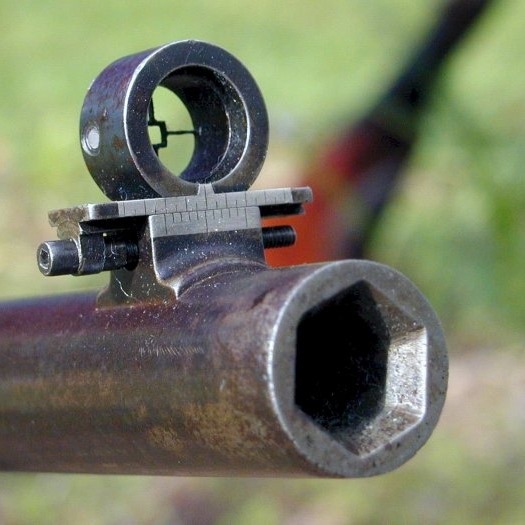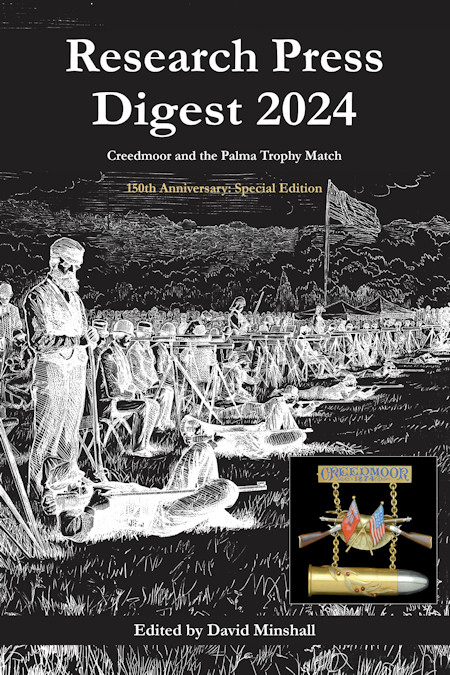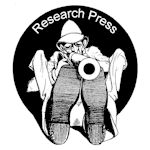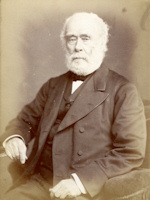
These pages are dedicated to the memory of
William (Bill) Scott Curtis
(1931-2021)
Research Press manages two facebook groups that may be of interest to readers
 Research Press Digest
Research Press Digest
Amazon


Hex Bore - The Whitworth Research Project
>> CONTENT NOW MOVED TO RESEARCHPRESS.UK <<
Hex Bore is a project by Research Press for the study of Whitworth rifles and artillery. News, updates, information and anecdotes will be found in the Hex Bore blog.
The Whitworth Research Project originated with De Witt Bailey and Bill Curtis. The study is being continued by David Minshall of Research Press who has been given access to the original project database and other files. This database now stands at over 700 rifles and is managed by Research Press.
 Joseph Whitworth was born at Stockport on the 21st of December, 1803. He began his career as a toolmaker in Manchester in 1833, where he rented a room with steam power, and put up a sign ‘Joseph Whitworth, Tool Maker, from London,’ thus founding a workshop which soon became the model of a mechanical manufacturing establishment. He died in January, 1887, with a world-wide reputation as the most eminent producer and designer of precision machine tools.
Joseph Whitworth was born at Stockport on the 21st of December, 1803. He began his career as a toolmaker in Manchester in 1833, where he rented a room with steam power, and put up a sign ‘Joseph Whitworth, Tool Maker, from London,’ thus founding a workshop which soon became the model of a mechanical manufacturing establishment. He died in January, 1887, with a world-wide reputation as the most eminent producer and designer of precision machine tools.
Approached in 1854 by Lord Hardinge to investigate 'the mechanical principles applicable in the construction of an efficient weapon,' Whitworth was unwilling to commit to the design of a complete set of machinery for manufacturing rifle muskets, but did accede to the construction of the machinery for the rifle barrel only. Whitworth's experiments revolutionised rifle design. Looking back on his achievements, in 1859 Joseph Whitworth wrote: "1855 - In March the rifle gallery was completed. By the end of the year, the proper construction for the rifle musket was determined." That's a statement of a confident man!
Renowned for its accuracy, the Whitworth rifle was used in long range competition and set standards for others to aspire to. Although never adopted for British Service, a version of the Whitworth rifle famously saw limited use in the hands of Confederate Sharpshooters during the American Civil War. Whitworth was however after military contracts, preferably for cannon; his rifles served well to place a convenient form of advertising for his system before military men and riflemen of the Volunteer forces who were well connected in military circles.
Whitworth’s most important contribution to the gun-making business and more generally to the development of rifled small arms was that he reduced a great deal of confusion to order by systematic experiment, and created a foundation of proven facts from which he created a system which exhibited the great superiority of his work.
Reference
- Whitworth Rifle Warnings - This information is the result of Bill Curtis and De Witt Bailey research concerning original Whitworth rifles. Warning! - The Whitworth Research Project has identified problems with several rifles that have appeared on the open market from time to time.
- Guns and Steel - "It is probable that few are aware of the manner in which I approached the subject of rifling guns, or know that the Whitworth rifle was produced as the result of many months of experimental research in the rifle gallery, five hundred yards long, erected in my grounds at Manchester." [1873]
- Contemporary leaflets concerning loading and cleaning the Whitworth rifle.
- Rifled Small Arms - J. Whitworth letter appealing against arming troops with short-range rifles [1870].
- Measuring Precision - Anyone reading 19thC texts about the Whitworth rifle will, sooner or later, come across the term 'Figure of Merit' (FoM). This was a comparative process used to evaluate the precision of arms. Today FoM is sometimes misunderstood and mistaken for group size - where it is actually the mean radial distance of shots from the centre of the group. Whilst the Whitworth rifle was capable of remarkable accuracy for its time, misinterpretation of the 19thC FoM can lead to some wildly ambitious expectations of groups. This article explains how Figure of Merit was determined, and considers some oft misquoted data on the Whitworth rifle.
Whitworth Rifles
- Rifle No. 237 - Sporting rifle
- Rifle No. 449 - Military target rifle
- Rifle No. B40 - Military target rifle
- Rifle No. B143 - Military target rifle
- Rifle No. C529 - Confederate Sniper Rifle
- Pattern 1863 Enfield-Whitworth Short Rifle
Ammunition & Accessories
- Whitworth Hexagonal Bullet Mould - Whitworth produced moulds for bullets in hexagonal or cylindrical form. His moulds were serially numbered but these numbers are not related to the rifle’s serial numbers.
- Whitworth: Bullets - A selection of bullets and packaging.